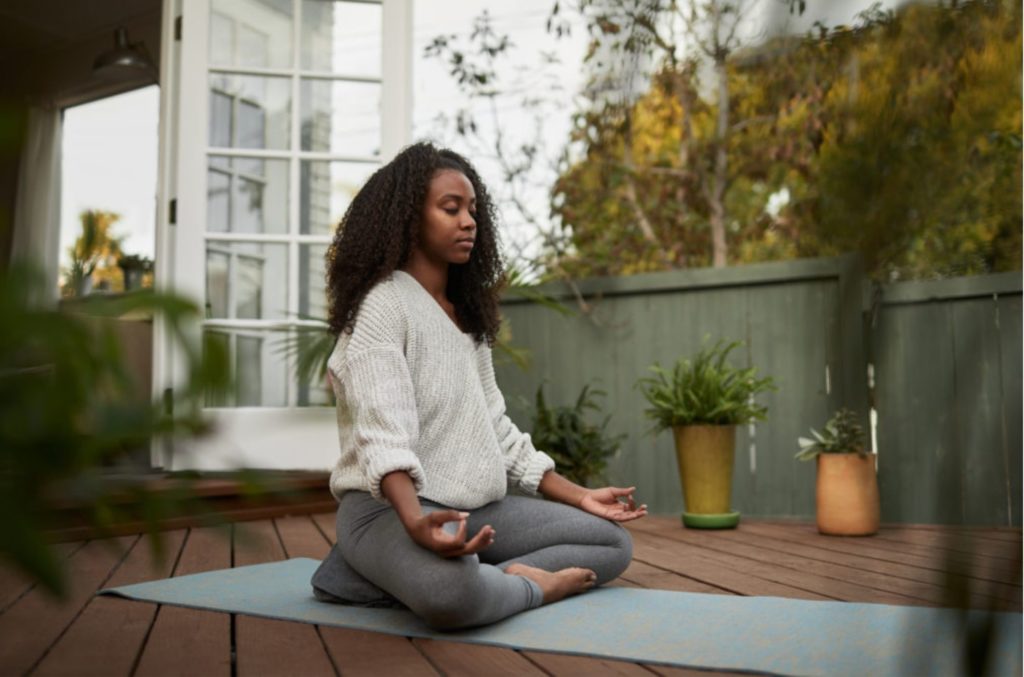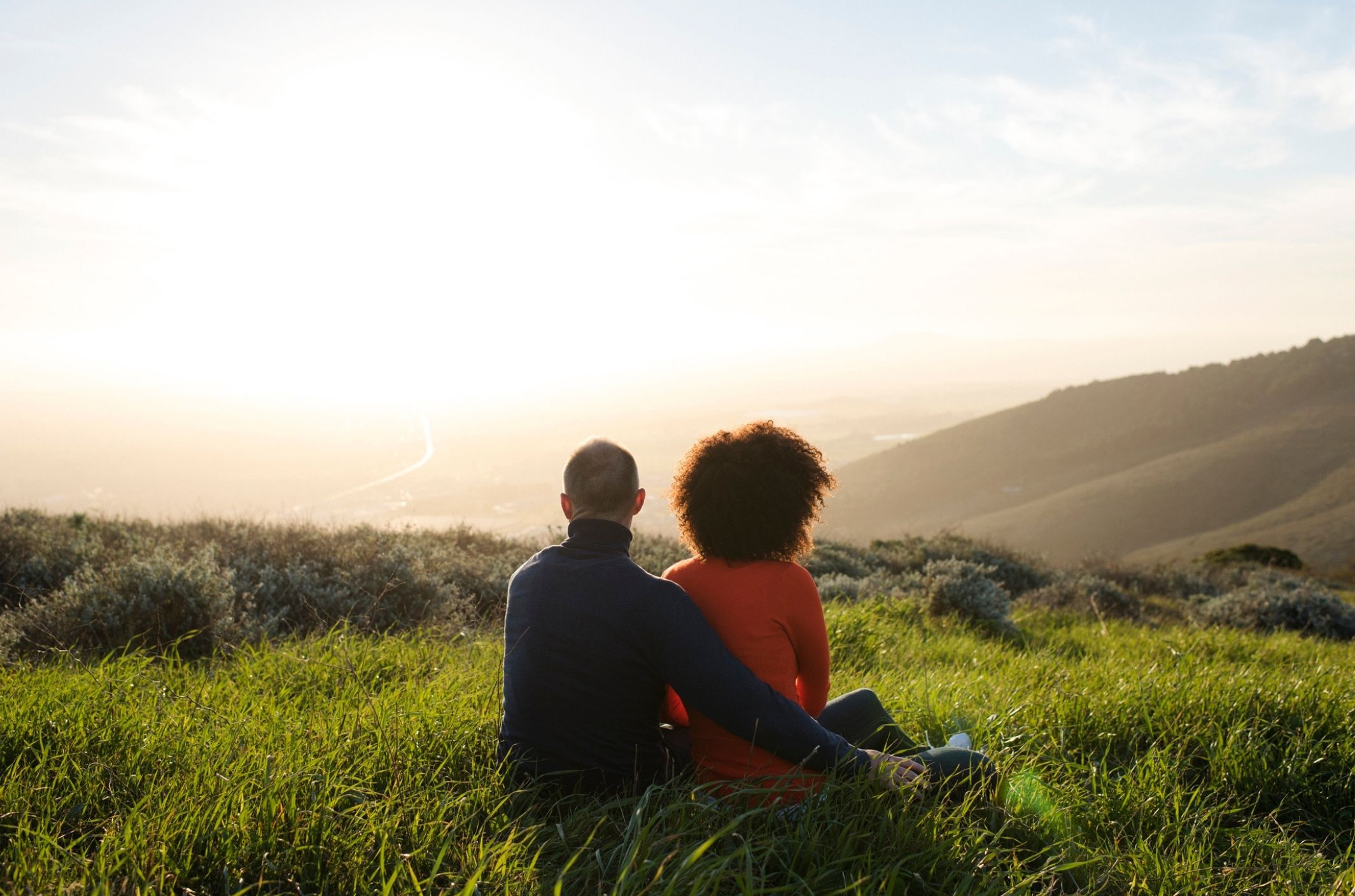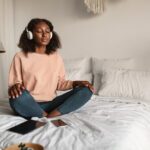Anxiety can feel overwhelming and out-of-control. But there are scientifically proven behavioral strategies that can help calm you down fast. In this article, we’ll teach you 5 relaxing exercises that you can use to manage the symptoms of anxiety.
The body’s stress response
Whether it’s mild or severe, the experience of anxiety activates a chain of automatic responses in your brain and body. The body’s stress response system starts in a part of your brain called the amygdala.
This part of the brain activates your sympathetic nervous system, which is responsible for protecting you from perceived threats and dangers. When the sympathetic nervous system gets activated, it sends signals throughout your body, compelling it to react.
The bodily sensations you experience are signs that the body is preparing to face an immediate threat with a fight, flight, or freeze reaction. While they’re meant to be protective, these symptoms can often get in the way of your daily functioning.
Learn how to stop a panic attack right now.
How to calm your system with relaxing exercises
The good news is that you can help manage these sensations by engaging in exercises that calm the sympathetic nervous system and amygdala by activating your body’s relaxation response, the parasympathetic nervous system.
Activating this system calms your whole body and makes room for rest and natural healing processes. The following techniques can help ease even extreme anxiety as it arises. These relaxing exercises work by sending signals back to the brain to remind it that you’re okay and that it’s safe to release stress and tension.
Here are 5 relaxation techniques for anxiety you can try right now.
1. Abdominal breathing
When you have an episode of anxiety, oxygen is sent to your arms and legs, preparing them to fight or flee. As a result, less oxygen is available for your brain, making it difficult to think clearly.
By taking slow, deep breaths, you activate the calming system in your body, which sends signals to your brain that everything is okay. Plus, with more oxygen going to your brain, you’ll be able to think more clearly, with greater perspective.
To begin, put your body in a comfortable position. If it feels okay, try sitting upright for the exercise.
- Inhale. Take a slow and deep breath into your belly as you count to 4.
- Hold. Keep holding your breath for a count of 2.
- Exhale. Then, let your held breath out as you count to 4.
- Pause. Try this cycle 8 times or for as many cycles as you need to start feeling the calming effects.
As you inhale, think about expanding your belly rather than your chest. If it helps, imagine that your chest is like a birdcage. Inhale, visualizing the bottom of the birdcage broadening and pushing down. Exhale and see the bottom of the birdcage rising.
Learn more ways to calm anxiety with mindful breathing.
2. Progressive muscle relaxation
Progressive muscle relaxation (PMR) refers to a process of slowly tightening and then releasing muscle groups in your body. PMR signals the activation of the parasympathetic nervous system just like taking deep breaths does. This system is responsible for relaxing and calming the whole body, making it possible for you to think clearly.
With practice, you will gain an awareness of tension in your body and develop the ability to use relaxing exercises like this one to release the places that feel tight.
To begin, sit or lay down in a comfortable position and take 3 deep belly breaths.
- Focus. Center your attention on your hands.
- Tense. Take a full breath in and tighten your hands into fists and squeeze.
- Maintain. As you do this, hold your breath and keep squeezing for 5 seconds.
- Relax. On a lengthy exhale, slowly release the tension and uncurl your hands.
After you finish with your hands, see what it’s like to feel rest instead of tension. When you’re ready, try the same exercise on other muscle groups in your body.
Here’s a sequence you can use:
- Shoulders
- Chest
- Stomach muscles
- Buttocks
- Thighs
- Calves
- Feet
- Face (eyes, lips, nose)
Once you have moved through each muscle group, let awareness wander your whole body, paying special attention to any changes in sensation. You can always come back to any areas that are still feeling tense.
3. Body scan
The body scan expands awareness of your mind-body connection to quiet your mind. This popular technique is part of the Mindfulness-Based Stress Reduction practice that focuses on moment-by-moment non-judgmental awareness. Relaxing exercises like this one can help calm both the mind and body.
While PMR focuses on releasing tension, the body scan focuses on full-body awareness, connection, and breath.
Start by sitting comfortably or laying on your back with your palms facing up, eyes closed. Focus on your breath.
- Feel the sensations of breathing, the rising and falling of each breath.
- Focus your attention on your feet and toes.
- Notice. Are they tense or relaxed? What temperature are they? What sensations are you noticing? Pay attention to the way your toes connect to your feet and legs. How does it feel?
- Watch any thoughts that come up. Refrain from judging them. Let them pass by like clouds in a blue sky. Then draw your attention back to your body.
Repeat this process as you move up through your body in the following sequence:
- Calves
- Thighs
- Buttocks
- Stomach muscles
- Chest
- Shoulders
- Hands
- Arms
- Face (eyes, lips, nose)
When you’re done, see whether the quality of your physical and mental experience has changed. Let any calming effects absorb deeply into your body and mind
4. Mindfulness
When you practice mindfulness, you’re using awareness to observe your thoughts and feelings. This kind of meditation uses the same non-judgemental awareness as the body scan to watch the way your brain thinks thoughts. Over time, practices like mindfulness can help you learn how to relax your mind and calm anxiety.
Start by finding a comfortable position and taking 3 deep, full breaths.
- Focus your awareness on observing your thoughts.
- As a thought arises, label it “thought.”
- Watch as thoughts come up and notice when they pass away.
As you continue, you’ll probably notice that both your thoughts and the physical sensations in your body are impermanent. Mindfulness trains you to notice as they arise, take shape, and fade away without becoming attached to them.
Rather than believing everything your brain thinks, you develop the capacity to choose how you relate to your thoughts.
5. Guided imagery
Your thoughts have a physiological impact on you because they trigger chemical reactions in your brain. The neurochemicals released in your brain trigger physical responses in your body, which is why calming visualizations can help your body relax.
When you feel stressed or anxious, you can pay a mental visit to your favorite place in nature. Or picture yourself in a place that feels immediately soothing and comforting. Studies show that guided imagery using nature-based visualizations helps reduce anxiety.
Do weighted blankets for anxiety really work? Learn more here.
Prevention
You can use these relaxing exercises as in-the-moment interventions. But there are also measures you can take to care of your mental health each day that help reduce anxiety moving forward.
1. Do what feels good.
Another way to reduce anxiety and manage stress is to engage in pleasurable activities that occupy your senses and activate the parasympathetic nervous system.
Try and stick to behaviors that are nurturing and promote health rather than activities that you might feel guilty about after the fact.
Here are some activities to try:
- Listening to calming music
- Watching a favorite movie that reminds you of good times
- Reading an inspiring book
- Taking a warm bath or wrapping yourself in a cozy blanket
- Lighting fragrant candles or burning essential oils
- Drinking herbal caffeine-free tea
- Going outside and being in nature
- Snuggling or spending time with a pet
While these activities can be useful tools to manage anxiety in the moment, you can also plan them as a regular part of your routine. Daily self-care is an essential part of managing stressors, reducing anxiety, and protecting your mental health.
2. Get your body moving
Moderate to vigorous exercise reduces anxiety. In addition, both the long- and short-term positive effects of exercise on mental health have been well-demonstrated by research.
In part, this happens because exercise triggers the release of endorphins, the body’s natural stress relievers and painkillers. Beyond just helping you relax, exercise has many benefits for your physical health. That’s why making exercise a regular part of your life can help you care for both your body and mind.
3. Eat a healthy, balanced diet
A well-balanced diet can help protect you from anxiety and other mood disorders. Both overconsumption and underconsumption of calories can have adverse effects on mental wellbeing.
In addition, studies have linked certain nutrients, like omega-3 supplementation, to decreased anxiety. It helps to make a healthy, balanced diet part of your mental health prevention plan.
4. Get enough rest
Sleep is a regenerative process for the mind and body. Make sure you’re giving your body enough time to do this, at least 7 hours a night. Not sleeping enough and sleeping poorly can contribute to anxiety and other mental health issues.
5. Learn your triggers
One significant way you can take care of yourself is by learning what triggers your anxiety. It may take some time to figure out what these triggers are, so try to be patient with yourself during the process. Once you have a sense of your triggers, you can prepare in advance to face them or avoid them when possible.
Does weed help anxiety or make it worse? Get the details here.
Takeaway
- When you’re anxious, your body triggers a physical stress response.
- You can use relaxing exercises to calm the physical symptoms of anxiety.
- Deep breathing, PMR, body scan, mindfulness, and guided imagery are tools that can help relax your body when you’re experiencing anxiety.












